#hammamat
Explore tagged Tumblr posts
Text
Tunisia Unveiled: Discovering the Top Destinations in the Jewel of North Africa
Tunisia, nestled along the Mediterranean Sea in North Africa, is a country brimming with a rich tapestry of history, diverse landscapes, and vibrant culture. From ancient ruins to bustling markets and pristine beaches, Tunisia offers a delightful array of experiences for travelers. In this blog post, we’ll unravel the top destinations, each contributing to the country’s unique allure. Carthage –…
View On WordPress
#2024#Algeria#carthage#djerba#dougga#hammamat#matmata#mediterranean sea#morocco#north africa#sidi bou said#tourism in algeria#Travel#travel-tips#tunisia
0 notes
Text
Hallowe’en is here, if you are looking for a card offer for price list: here’s an idea for beauty bars
0 notes
Text
Ma'in Hot Springs on the edge of Wadi Mujib, Jordan

0 notes
Text
Ma'in Hot Springs on the edge of Wadi Mujib, Jordan

0 notes
Photo

Ma'in Hot Springs on the edge of Wadi Mujib, Jordan
0 notes
Photo

Ma'in Hot Springs on the edge of Wadi Mujib, Jordan
0 notes
Photo

Ma'in Hot Springs on the edge of Wadi Mujib, Jordan
0 notes
Photo

Ma'in Hot Springs on the edge of Wadi Mujib, Jordan
0 notes
Text
The Turin Papyrus Map: The Oldest Surviving African Map Of Topographical Interest From The Ancient world
The Turin Papyrus Map stands as an extraordinary artifact, offering a captivating glimpse into the ancient world through its detailed topographical and geological features. Originating from around 1150 BCE, the map was crafted by the renowned Scribe-of-the-Tomb Amennakhte, son of Ipuy, for Ramesses IV’s ambitious quarrying mission in the Eastern Desert. Measuring 2.8 meters in length and 0.41…
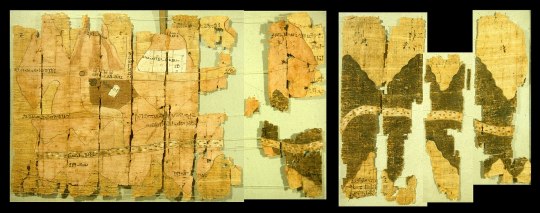
View On WordPress
#African History#Ancient Egyptians#ancient egyptians history#Nubian Shield#Ramesses VI#The Turin Papyrus Map#Turin Papyrus Map#Wadi Hammamat
0 notes
Text
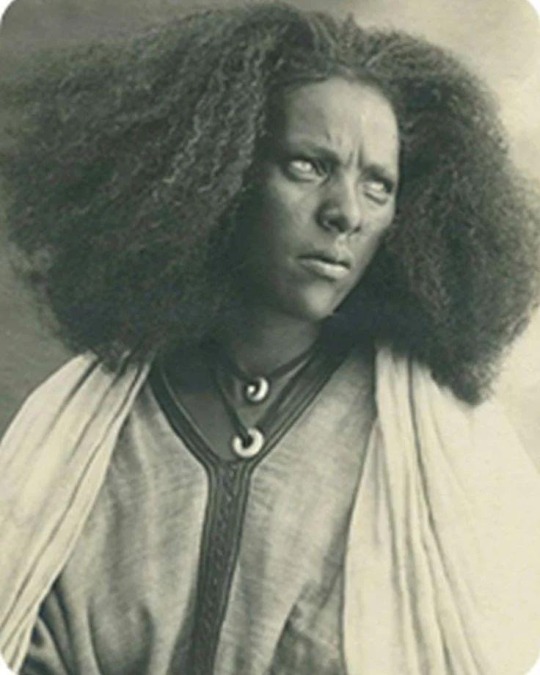
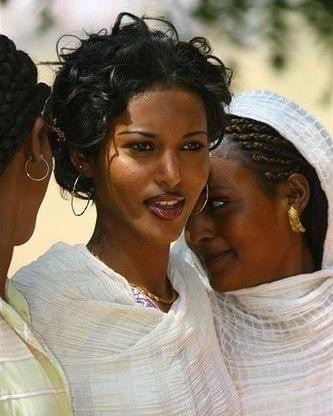


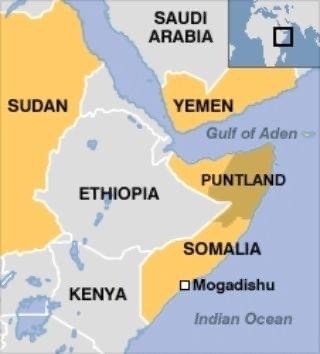
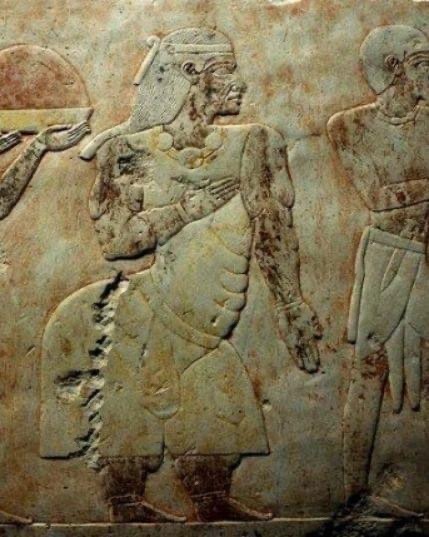
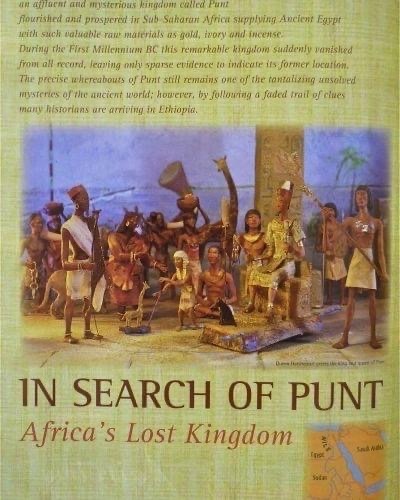
The Land of Punt(Ta netjer, the “land of the gods”)
After the end of the New Kingdom period, Punt became “an unreal and fabulous land of myths and legends.”
At times, the ancient Egyptians called Punt Ta netjer, meaning “God’s Land”.This referred to the fact that it was among the regions of the Sun God, that is, the regions located in the direction of the sunrise, to the East of Egypt. These eastern regions’ resources included products used in temples, notably incense. Older literature (and current non-mainstream literature) maintained that the label “God’s Land”, when interpreted as “Holy Land” or “Land of the gods/ancestors”, meant that the ancient Egyptians viewed the Land of Punt as their ancestral homeland. W. M. Flinders Petrie believed that the Dynastic Race came from or through Punt and E. A. Wallis Budge stated that “Egyptian tradition of the Dynastic Period held that the aboriginal home of the Egyptians was Punt…”.The term was not only applied to Punt, located southeast of Egypt, but also to regions of Asia east and northeast of Egypt, such as Lebanon, which was the source of wood for temples.
Location
The oldest known expedition to Punt was organized by Pharaoh Sahure of the 5th dynasty (2458-2446 BC). Also around 1950 BC, in the time of King Mentuhotep III, 11th dynasty (2004-1992 BC), an officer named Hennu and three thousand men from the south transported material for building ships through Wadi Hammamat, and to Punt acquiring a number of exotic products including incense, perfume and gum was brought to Egypt. A very famous expedition was for Queen Hatshepsut in the 18th dynasty (1473-1458 BC). It was formed of five ships, each measuring 70 feet long, and with several sails. These accommodated 210 men, including sailors and 30 rowers, and was led by the Nubian general “Nehsi”. They departed at Quseir on the Red Sea for what was primarily a trading mission, seeking frankincense and myrrh, and fragrant unguents used for cosmetics and in religious ceremonies. However, they also brought back exotic animals and plants, ivory, silver and gold. A report of this voyage is left behind as temple reliefs in Deir el-Bahri, Egypt (see reliefs below). The reliefs shows the departure of the expedition, its arrival at the mysterious land, the landing of the ships with the gifts by the Puntine leader to Hatshepsut, and the preparations for the return voyage. The temple reliefs also showed the features of the Puntine people, who were black Africans, as well as another race much resembling Egyptians. Donkeys were depicted as the method of transporting goods, and white dogs guarding the people’s houses. Birds, monkeys, leopards and hippopotamus are also seen, as well as giraffes which are typical African animals, to live in Punt. The Nubian Nehsi is then shown in front of his tent with a banquet offered to his guests, and observing the gifts presented.
And then there is the story of The Shipwrecked Sailor, 2200 BC which references Punt.
Petrie, W.M. Flinders. The Making of Egypt, London. New York, Sheldon Press; Macmillan, 1939:
Page 77
“Some of the most obvious public works of the 1st dynasty were the carrying on of earlier undertakings. The great historical maces, and the irrigation works, had been developed under the Scorpion king of the Aunu, and both may have originated much earlier. Many vases and bowls bear his name.”
“Origins in Elam and Punt. The distinctive character of the 1st dynasty, which separates it from all that went before, is the conquest and union of the whole land of Egypt. It became thus subject to the falcon-bearing tribe of Horus, which was the natural enemy of the Aunu, the Set-bearing tribe. This falcon tribe had certainly originated in Elam, as indicated by the hero and lions on the "Araq knife handle”. They went down the Persian Gulf and settled in the “horn of Africa.” There they named the “Land of Punt,” sacred to later Egyptians as the source of the race. The Pun people founded the island fortress of Ha-fun, which commands the whole of that coast, and hence came the Punic or Phoenic peoples of classical history. Those who went up the Red Sea formed the dynastic invaders of Egypt, entering by the Qocier-Koptos road. Others went on to Syria and founded Tyre, Sidon and Aradus, named after their home islands in the Persian Gulf (Strabo, XVI, iii, 4). This migration formed the basis of the great spread of Puni, by the colonies of Carthage around the Mediterranean, and into the Atlantic on both north and south.“–W.M. Flinders Petrie
The Oxford History of Ancient Egypt, Ian Shaw, p. 317, 2003:
"There is still some debate regarding the precise location of Punt, which was once identified with the region of modern Somalia. A strong argument has now been made for its location in either southern Sudan or the Eritrean region of Ethiopia, where the indigenous plants and animals equate most closely with those depicted in the Egyptian reliefs and paintings.
It used to be assumed (primarily on the basis of the scenes at Deir el-Bahri depicting Hatshepsut’s expedition to Punt in the mid-18th Dynasty) that the trading parties travelled by sea from the ports of Quseir or Mersa Gawasis, but it now seems likely that at least some of the Egyptian traders sailed south along the Nile and then took an overland route to Punt, perhaps making contact with the Puntites in the vicinity of Kurgus, at the fifth cataract.
The Deir el-Bahri scenes include depictions of the unusual Puntite settlements, comprising conical reed-built huts set on poles above the ground, and entered via ladders. Among the surrounding vegetation are palms and myrrh trees, some of the latter already in the process of being hacked apart in order to extract the myrrh. The scenes also show myrrh trees being loaded onto the ships so that the Egyptians could produce their own aromatics from them (and it has been argued that this in itself may be an argument for the combined Nile-overland route from Punt to Egypt, given the fact that such plants might well have died during the more difficult voyage northwards along the Red Sea coast). These myrrh trees might even have been replanted in the temple at Deir el-Bahri itself, judging from the surviving traces of tree pits there.”
The oldest known expedition to Punt was organized by Pharaoh Sahure of the 5th dynasty (2458-2446 BC). Also around 1950 BC, in the time of King Mentuhotep III, 11th dynasty (2004-1992 BC), an officer named Hennu and three thousand men from the south transported material for building ships through Wadi Hammamat, and to Punt acquiring a number of exotic products including incense, perfume and gum was brought to Egypt. A very famous expedition was for Queen Hatshepsut in the 18th dynasty (1473-1458 BC). It was formed of five ships, each measuring 70 feet long, and with several sails. These accommodated 210 men, including sailors and 30 rowers, and was led by the Nubian general “Nehsi”. They departed at Quseir on the Red Sea for what was primarily a trading mission, seeking frankincense and myrrh, and fragrant unguents used for cosmetics and in religious ceremonies. However, they also brought back exotic animals and plants, ivory, silver and gold. A report of this voyage is left behind as temple reliefs in Deir el-Bahri, Egypt (see reliefs below). The reliefs shows the departure of the expedition, its arrival at the mysterious land, the landing of the ships with the gifts by the Puntine leader to Hatshepsut, and the preparations for the return voyage. The temple reliefs also showed the features of the Puntine people, who were black Africans, as well as another race much resembling Egyptians. Donkeys were depicted as the method of transporting goods, and white dogs guarding the people’s houses. Birds, monkeys, leopards and hippopotamus are also seen, as well as giraffes which are typical African animals, to live in Punt. The Nubian Nehsi is then shown in front of his tent with a banquet offered to his guests, and observing the gifts presented.
And then there is the story of The Shipwrecked Sailor, 2200 BC which references Punt.
[right] chief of Punt “Parakhu”; [left] his wife queen “Aty”
Original copy at the Museum at Cairo (No. 34419)
There is still some debate regarding the precise location of the mythical land of Punt:
Breasted, James Henry, Ph.D., Ancient Records of Egypt, Historical Documents, Vol. II, 1906:
Pages 102-104
“These are undoubtedly the most interesting series of relief’s in Egypt, and form almost our only early source of information for the land of Punt. They are as beautiful in execution as they are important in content. They record an important expedition of the queen thither, which was successfully concluded just before her ninth year.”
“The only earlier evidences of intercourse with Punt are as follows: In the Fourth Dynasty a Puntite negro appears as the slave of one of the sons of King Khufu, in the Fifth, King Sahure sent an expedition thither, and King Isesi sent another, which brought back a dancing dwarf; in the Sixth, an officer of Pepi II, named Enenkhet, was killed by the Sand-dwellers on the coast, while building a ship for the Punt voyage, and another expedition thither under the the same king was led by assistant treasurer, Thethy; in the Eleventh Dynasty, Henu, chief treasurer of King Senekhkere-Mentuhoptep III, dispatched an expedition to Punt, which he accompanied only to the coast of the Red Sea; in the Twelfth Dynasty, an officer of Amenemhet II, named Khentkhetwer, records his safe return from Punt; and finally there was also an expedition under Sesostris II.”
“The question of the location of Punt is too large for discussion here, but is was certainly in Africa, and probably was the Somali coast.”
“Historically, it is important to note that Thutmose III appears only once in the Punt reliefs, and that in a subordinate position, so that, as far as this source is concerned, the queen is the author of the expedition, which she undertakes in accordance with an oracle of Amon”.
Page 117
Punt under the Queen
“But I will cause thy army to tread them, I have led them on water and on land, to explore the waters of inaccessible channels, and I have reached the Myrrh-terraces. It is a glorious region of God’s-Land; it is indeed my place of delight. I have made it for myself, in order to divert my heart, together with Mut, Hathor, Wereret (Isis), mistress of Punt, the mistress, ‘Great in Sorcery’, mistress of all gods. They took myrrh as they wished, they loaded the vessels to their hearts’ content, with fresh myrrh trees, every good gift of this country, Puntites whom the people know not, Southerns of God’s-Land. I conciliated them by love that they might give to thee praise, because thou art a god, because of thy fame in the countries. I know them, I am their wise lord, I am the begetter, Amon-Re; my daughter, who binds the lords, is the king [Makere] (Hatshepsut). I have begotten her for myself. I am thy father, who sets thy fear among the Nine Bows, while they come in peace to all gods. They have brought all the marvels, every beautiful thing of God’s-Land, for which thy majesty sent them: heaps of gum of myrrh, and enduring trees bearing fresh myrrh, united in the festival-hall, to be seen of the lord of the gods. May thy majesty cause them to grow. My temple, in order to delight my heart among them. My name is before the gods, thy name is before all the living, forever. Heaven and earth are flooded with incense; odors are in the Great House. Mayest thou offer them to me, pure and cleansed, in order to express the ointment for the divine limbs, to offer myrrh, to make ointment, to make festive my statue with necklaces, while I am making libations for thee. My heart is glad because of seeing thee.”–James Henry Breasted
The loading of the ships.
Plate from The Road to Punt, F.D.P. Wicker, The Journal of African History, Vol. 12, No. 1 (1971), 162.
18 notes
·
View notes
Text
0 notes
Text

Sacred Gold: The Secret of Immortality in Ancient Egypt.
In the heart of the Egyptian desert, beneath the sands that witnessed the glory of the pharaohs, there was a shining secret that caught the eye and captured the heart—gold! It was not just a precious metal, but a symbol of power, divinity, and immortality. In ancient Egypt, gold was more than wealth, it was part of the faith, a weapon in politics, and a mystery in the economy.
It had great sanctity. It was not used in ordinary trade, but was reserved for gods and kings. Temples were adorned with golden statues, royal coffins were covered in gold, and even funerary masks were made from it, as we saw in the mask of Tutankhamun, which still dazzles the world with its beauty and splendor.
Gold Mines: Treasures in the Depths of the Desert
Gold did not fall from the sky, but was extracted with great effort from the mines spread throughout the Egyptian deserts, especially in Nubia and Wadi Hammamat. Miners worked in harsh conditions, using stone tools and fire to break up rocks, then grinding and washing the ore to separate the gold from the rest of the minerals. These men were unknown, but they helped build Egypt’s glory.
Gold and Power: How the Pharaohs Built Their Empire
Gold was the backbone of Egypt’s political and military power. The pharaohs used it to pay soldiers, finance military campaigns, and dazzle foreign kings with lavish gifts. Gold was the secret weapon that gave Egypt global influence.
Gold and Immortality: The Key to Life After Death
Gold was not just a worldly adornment, it was a ticket to the afterlife. The Egyptians believed that gold would not rust or perish, just like their souls would live forever. So, tombs were filled with gold so that the dead could live in luxury in the afterlife.
Conclusion: Gold… An Undying Legend
Despite thousands of years, Egyptian gold continues to dazzle the world, telling the story of a nation that believed that immortality was possible, and that true brilliance lies not in the metal itself, but in the greatness it immortalizes. Gold in ancient Egypt was not just wealth, but a language that spoke of faith, power, and eternal glory.
1 note
·
View note
Text
El aeropuerto de la Esfinge se prepara para recibir a los visitantes con motivo de la inauguración del Gran Museo Egipcio.
En el marco de los preparativos actuales para la inauguración del Gran Museo Egipcio, las autoridades competentes se esfuerzan por confirmar que las instalaciones que rodean al museo, incluidos los aeropuertos, están listas.
Una de estas instalaciones es el Aeropuerto Internacional de la Esfinge, que acogerá a visitantes locales e internacionales para las ceremonias de inauguración de este importante edificio cultural. No olvide visitar las atracciones de Alejandría, como la Biblioteca de Alejandría. Y los atractivos del Mar Rojo, como la isla de Mahama, en Hurghada. Puede visitar Luxor en los circuitos por Egipto que ofrece Cairo Top Tours.
En este contexto, el Comité de Inspección de Seguridad visitó el aeropuerto para evaluarlo. El objetivo de la visita era garantizar que se aplican las medidas de seguridad, sanitarias y medioambientales necesarias para ofrecer a los visitantes una experiencia de viaje segura y cómoda.
El Aeropuerto Internacional de Sphinx (SIA) ha sido inspeccionado por el Comité de Inspección de Seguridad.
(El Piloto Montaser Mannaa, Viceministro de Aviación Civil, encabezó el SIC en una visita de inspección al Aeropuerto Internacional de la Esfinge, que abarcó varias áreas clave para evaluar la preparación del aeropuerto, incluidas las operaciones de seguridad, la salud, la logística y los preparativos medioambientales.
Hablaron de todos los preparativos para garantizar que el aeropuerto pueda acoger a las delegaciones internacionales que acudirán en masa al Gran Museo Egipcio en cuanto abra sus puertas, la Guía de Viajes de Egipto recomienda visitar los yacimientos egipcios.
Refuerzo de las medidas sanitarias y de seguridad
El Gran Museo Egipcio es un destino turístico mundial, lo que significa que el Aeropuerto de la Esfinge debe estar totalmente preparado para recibir a los turistas con seguridad y comodidad.
Durante su estancia en Egipto, podrá explorar la bahía de Naama en Hurghada. Egipto también cuenta con numerosos lugares de interés, el más famoso de los cuales es el Museo de Hurghada, con unas 1.200 exposiciones. También puede disfrutar de la Isla de los Faraones, un lugar maravilloso para pasar el día. Así como Wadi Hammamat, en el desierto egipcio. Uno de los palacios más famosos es la Reserva Natural de Nabq, hurghada cuenta con numerosos palacios de distintas épocas.
En Hurghada también podrá disfrutar de otras actividades, como visitar la bahía de Marsa Mubark, en Marsa Allam, uno de los palacios más antiguos. También puede visitar el templo de Serabit El-Khadim, uno de los más famosos que proporcionaba piedras preciosas a los faraones. También podrá admirar los restos del naufragio del SS Thistlegrom en el Mar Rojo, un buque de guerra británico hundido en el Mar Rojo, cuyo yacimiento destaca por su singular diseño arquitectónico. No se pierda el Parque Nacional de Wadi El Gemal, en Egipto.

0 notes
Text
The Wadi Hammamat, (Valley of Many Baths’), one of numerous wadis or dry valleys in the Eastern Desert’s rocky highlands, serves as the center stretch of one of the most important routes between the Nile and the Red Sea.
The Wadi Hammamat is located halfway between the Nile and the Red Sea, approximately 60 kilometers from either Quft (ancient Coptos) on the Nile or Quseir (near ancient Myos Hormos). The Hammamat road is one of the shortest Nile-Red Sea routes, therefore, it has been used for millennia and is now dotted with ancient ruins and resting sites, as well as hundreds of rock inscriptions or graffiti. In addition, considerable mining and quarrying have taken place in or near Wadi Hammamat.
0 notes
Text

Chris recruiting North Melbourne supporters in Hammamat Tunisia
0 notes
Text
BEST HONEYMOON PLACES IN JORDAN, 10 DAYS
BEST HONEYMOON PLACES IN JORDAN, 10 DAYS
Enter the world of the Ancient Egyptians and find out why their civilization was able to capture the imagination with amazing Holidays In Jordan, scout Jordan with its Historical sites, get amazing tours to visit all the famous archaeological sites with Best Honeymoon Places in Jordan, Explore Amman "Jordan", visit Umm Qais, Jerash, Ajloun, explore Mount Nebo, Madaba, Dead Sea, finally beguile your eyes at Petra with its amazing wonders.
Visit the most famous archaeological sites with Jordan Egypt Tour Package, Explore Petra city with our Best Honeymoon Places in Jordan, visit Jordan and Egypt, Explore Umm Qais, Jerash, Mount Nebo, Madaba, and Dead Sea to enjoy the largest natural spa in the world.
Experience a marvelous Jordan Petra Tour, Discover the main attractions with Amman to Petra Tour, explore stunning sites of Jordan from Amman to Petra, visit the Rose Red City of Petra, know the legends of Petra, jerash and Dead Sea with World Tour Advice
Overview
Best Honeymoon Places in Jordan, We offer you a honeymoon travel package to visit the best places in Jordan, 10 Days tours to discover Petra, Wadi Rum, the Hammamat, the Dead Sea and Amman in Jordan
Itinerary
Day 1 : Arrival Amman Welcome to Jordan, Our Tour Representative will meet you at Ammann airport, he will hold a sign in his hand with your names, then a direct transfer of half an hour to arrive to your hotel in Amman, check in, free time for leisure, Overnight in Amman
Day 2 : City Tour In Amman, Jerash, Hammamat Ma\'in Hotel (B) Enjoy your breakfast in your hotel in Amman,then meet your tour guide to start your honeymoon tours in Amman the capital of Jordan,you will go to visit the remains of Roman, Islamic periods in Amman,you will see the city view from the citadel hill,you will visit the Archaeological museum, the Roman theatre,a walking tour in the traditional markets, the Souq & Rainbow street, then drive to the north of Amman to visit other beautiful site in Jordan Jerash, which is the best example representing a Roman provincial city in all Middle East, during your tour in Jerash , you will visit Oval plaza, the colonnaded street, the Nymphaeum and Artemis temple, then you will drive to Hammamat Ma\'in 7 check in hotel Overnight in Hammamat Ma\'inJordan in Hammamat Ma\'in,it is located 264 meters under the sea level, it is a natural area surrounded by natural springs & waterfalls Overnight at the Hammamat hotel
Day 3 : Hammamat Ma'in free day for leisure in Hammamat Ma'in, Enjoy your free day in Hammamat Ma'in , it is called also Zarqa Ma'in,, it is a series of natural hotsprings and waterfalls with biblical connections, Hammamat Ma'in are located between Madaba and the Dead Sea in Jordan. the Hammamat springs still run hot till today, now there are modern spa resort in the area, there are many springs but the main waterfall is gushing over a cliff beneath the resort, and its water temperature ranges from 40 to 60 degrees, there you will find Jordanian families & tourists enjoying the Hammamat waters, most of the Jordanian or the Arab families are in fully _veiled robes and the European touriss are in their modern western swimsuits. During the time of king Herod, these springs were called as Baaras, Herod built a big house there & according to the tradition, it was at that villa that Salome danced and John the Baptist was beheaded
Day 4 : Hammamat Ma'in, Free day for leasurs Enjoy your day swimming and enjoying the splendid views of Hammamat Ma'in , it is a free day for leisure
Day 5 : Tours To Madaba, Mount Nbo, Dead Sea hotel Enjoy your breakfast then drive to visit the city of Madaba, it is well known for its mosaic art,Madaba is a home of one of the most famous mosaic in the world,it is the 6 th century mosaic map of Jerusalem and the Holy land,it was done by 2 millions pieces of vividly colored local stones, Madaba mosaic depicts hills & valleys, towns & villages in Palestine, and arrive to Egypt Nile Delta. The mosaic map of Madaba covers Saint George church floor which is a Greek orthodox church built in1896 AD, Saint George church was built on the ruins of other elder Byzantine church, The original mosaic map was 15.6x6m, only about quarter of it was preserved very well. You can see other masterpeices of Madaba mosaic in the Church of The Virgin,the Apostles & in the Archaeological museum depicting nature, daily life things &scenes from the mythology. Proceed your tour from Madaba to visit mount Nbo,it is the place where Moses had gazed at the promised land, then drive to the Dead sea, go to your hotel , check in your Dead sea hotel. Overnight in Dead sea Day 6: Jordan Dead Sea at leisure Enjoy your breakfast in your hotel in Dead Sea, enjoy your free day as many other famous visitor from the ancient history, such asking Herod, or Queen Kleopatra, who were visiting the area, to enjoy its unique characters, the high temprature all the year, the low humidity, Jordan Dead Sea is the lowest point on earth and its water contain the highest content of minerals and salts in all our world Overnight Dead Sea Hotel
Day 7 Free Day for leisure in Dead Sea enjoy your second free day to enjoy the Dead sea
Day 8 Dead Sea Hotel, Dana Village, Wadi Rum, Petra Hotel Enjoy your breakfast in hotel, then drive to the Dana Biosphere Reserve, where you will enjoy the splendid different views in the largest nature reserve in Jordan,then driving towards the protected area ( Wadi Rum desert ), Wadi Rum is one of the most impressive desert landscapes in the world, start your safari tours by jeep 4x4, to explore the desert of Wadi Rum, discover the Nabatean Rock inscriptions, then driving about one hour and half to Petra, check in your hotel in Petra.
Day 9 Petra Day Tour, Petra Hotel After enjoying your breakfast,start a very unique day tour to discover the most important attraction in Petra, which was established by the Nabatean Arab to be their capital,they are a nomadic Aarabic tribe which settled in the area and established COMMERCIAL EMPIRE,You will strat the tour to Petra or walking or riding a horse or a camel to cross the Siq or tha canyon leading you to the Treasury building, discover te red lost city of Petra where you will see the royal tombs, the pharaoh's castle, the street of facades, tombs, temples and ta theatre, back to your hotel in Petra Overnight in Petra
Day 10 From Petra to Amman airport Enjoy your breakfast, check out at 11:30 am or before as your departure time, if your departure time is late we can add a day use in Petra hotel or in Amman hotel as you want, It takes about two hours and half from Petra hotel to Amman airport, the transfer time will depend on your flight time
Included
- Meet and greet service upon your arrival to Amman airport - All the travel package transfer by A/C modern vans,& English speaking ecoter - Accomodation in 5 stars hotels bed and breakfast one night at Amman hotel, 3 nights at Hammamat, 3 nights at Dead Sea, 2 nights at Petra hotel - English speaking Tour guide on spot in Petra 3 hours - English speaking Tour guide on spot in Jerash, one hour - 2 hours jeep safari in Wadi Rum desert
Excluded
- International flights - Meals not mentioned - Tipping kitty - Personal expenses
For more info
· amanywaw@gmail.com
· Website
· https://www.worldtouradvice.com/
· Mobile and what’s App:
· 002 01090023837
0 notes